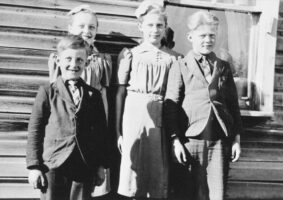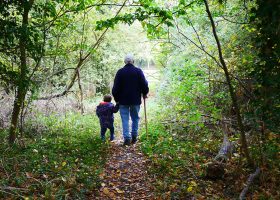By Mabel (Wheeler) Hobbs – Maple Creek, Sask.
Many communities celebrated their 100th anniversary this year, including my old home village and municipality of Carmichael, Saskatchewan.
The CPR passed through the area in 1882 and a siding was named Carmichael after a railway civil engineer. In 1887, the Canadian Agriculture, Coal, and Colonization Company, a British syndicate headed by Sir Lister Kaye, was granted 10 large tracts of land from the CPR.
One of these tracts was at Gull Lake and another at Crane Lake just east of Piapot. In 1888, buildings were erected on these farms and livestock placed on each one.
When the first cattle crossed the international border line they were branded 76 and thus the ranches were referred to for years after as the 76.
The first settlers were the men who had worked for the 76. Various cow camps were located along Bone Creek, 12 miles south of the tracks and up on the bench.
The large tracts of land used for ranching were broken up over several hard winters, especially 1907, and settlers with wire fencing increasing in number brought about the demise of the 76 ranch.
Land was opened up
In 1905, families came to the village to work for the CPR and lived in a section house. The only buildings in Carmichael were the CPR station, a boxcar, and no agent. It was just a big lonely prairie and miles of nothing.
By 1908, the land was opened up for settlers and the homesteaders came. In 1940, our family moved from the homestead 4-1⁄2 miles south of Grassy Hill School to a rented farm a half-mile south of Carmichael.
The village had a two-room school and for this reason we moved. Mom and dad wanted us four kids to get an education as they had little opportunity and only scant schooling. We were one of a few families that had their children graduate at least with Grade 8 for our brother and Grade 12 for my sisters and me.
Seven years were spent going to school and then I was off to summer school at Moose Jaw Normal School.
The Second World War was raging in Europe and so most of our extra activities were focused on raising funds for the war effort. Gasoline and rubber tires were rationed, so little travelling was done even if we had had the means to do so. Peoples’ income did increase during those years but money was still scarce.
There was sufficient rain for crops and gardens to grow but little effort was put forth to beautify the town.
Fast-forward again, 70 years this time. Some 20 years previous, a resident family planted a hedge of lilac, caragana, spruce, fir and, other trees along the railway right of way for half a mile. It is a stunning and beautiful windbreak.
The trees have grown so thick and tall that one can no longer see the trains passing through from the main street.
Wall displayed names of those who served
The old United Church where my husband and I were married 61 years ago still stands and is in good shape. It is no longer used for church services and for this weekend it housed a great display of quilts, especially old hand-sewn ones.
On one of the walls was a poster that I recognized as having made when I was a Grade 11 student. It showed an unrolled scroll containing the names of those young men who had served in the forces from 1940-1946. Several men did not return. They had paid the supreme sacrifice.
I have regrets about that honour roll because I only recorded the name of the young fellow who had attended Carmichael School as having given his life for the cause. The other servicemen should have been recognized too.
Grassy Hill School has been moved from the bench into the town and it sits just west of the church. It has been turned into a museum holding some interesting artifacts. The building looks so much smaller now than when I first attended as an eager Grade 1 pupil along with some 30 other kids with one teacher in charge of Grades 1 to 10.
A student or two took Grade 11 by correspondence courses, an almost impossible task for teaching, but many young people managed. The old blacksmith shop and a settler’s small shanty make up the other components of the museum. All the grain elevators are gone.
Today, tall wind turbines and gas and oil pumping stations dot the landscape. Prosperity has come to the province and it was also evidenced in the good-looking stands of rye, wheat, canola and other crops growing.




